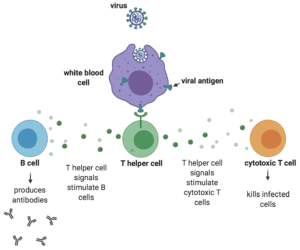Os poderes dos supertransmissores que fazem o vírus correr
Numa conjuntura em que não haja distanciamento físico e higiene social, cada infetado com covid-19 contagia, em média, duas a três pessoas. Mas há alguns indivíduos com capacidade para transmitir o vírus a dezenas. São os supertransmissores.
Sem a implementação de medidas de saúde pública e num cenário em que ninguém tem anticorpos, estima-se que cada doente infetado com o novo coronavírus transmita, em média, a infeção a duas ou três pessoas. Trata-se do indicador "R0" (ou número básico de reprodução), que permite aferir o nível de contágio expectável de um vírus e ter uma noção das medidas necessárias para reduzi-lo. Sendo uma média, é possível que parte dos infetados não contagie ninguém e que outros indivíduos sejam capazes de transmitir o vírus a muito mais pessoas.
Um estudo de investigadores da Escola de Higiene e Medicina Tropical de Londres, publicado em abril com base em dados de fevereiro da Organização Mundial da Saúde, estima que cerca de 80% dos casos de infeção pelo novo coronavírus analisados tenham sido provocados por cerca de 10% dos infetados. Os investigadores analisaram o número médio de contágios causados por cada pessoa infetada, a variação no número de transmissões secundárias e os chamados eventos de supertransmissão (ou superdisseminação), que acontece quando um doente - o supertransmissor - é capaz de infetar dezenas de outras pessoas. E concluíram que "nem todos os casos sintomáticos causam uma transmissão secundária", sendo que 80% destas "podem ter sido causadas por uma pequena fração de indivíduos infeciosos" (cerca de 10% do total de infetados). Outro estudo, publicado em maio por investigadores de Santiago de Compostela, com base numa amostra de mais de 4700 genomas do vírus, sugere que dezenas de indivíduos que contagiaram 20 a 30 pessoas podem ter estado na origem de metade dos casos.
Em ambas as investigações, os especialistas alertam para a necessidade de identificar os potenciais supertransmissores e analisar as suas características biológicas e comportamentais, para controlar os surtos.
Supertransmissões no SARS-CoV de 2003
Um estudo científico de 2004 sobre o surto de SARS-CoV em Hong Kong e Singapura (2002/03) revelou que 71,1% e 74,8% das infeções por SARS-CoV nos dois territórios, respetivamente, estavam relacionadas com eventos de supertransmissão e que estes tinham sido "responsáveis por quase três quartos das infeções". Ainda que os especialistas não tenham descoberto, com rigor, o que fez com que um indivíduo fosse um supertransmissor, os resultados da investigação sugeriram que a admissão tardia num hospital (mais de quatro dias) após o início dos sintomas pode ter sido "parcialmente responsável pela ocorrência de eventos de supercontágio, especialmente durante a fase inicial da epidemia". Isto porque "os pacientes internados tardiamente poderiam ter desenvolvido uma carga viral elevada",
Ainda assim, ressalvaram, a transmissão da doença pode ser também influenciada por "fatores epidemiológicos e ambientais", relacionados com as características do agente, do infetado e do meio. Assim sendo, estes tipos de fenómenos "devem ser investigados devidamente para identificar os fatores subjacentes comuns para a prevenção eficaz da SARS no futuro", concluíam, à data, os especialistas.
Numa conjuntura em que não haja distanciamento físico e higiene social, cada infetado com covid-19 contagia, em média, duas a três pessoas. Mas há alguns indivíduos com capacidade para transmitir o vírus a dezenas. São os supertransmissores.
Sem a implementação de medidas de saúde pública e num cenário em que ninguém tem anticorpos, estima-se que cada doente infetado com o novo coronavírus transmita, em média, a infeção a duas ou três pessoas. Trata-se do indicador "R0" (ou número básico de reprodução), que permite aferir o nível de contágio expectável de um vírus e ter uma noção das medidas necessárias para reduzi-lo. Sendo uma média, é possível que parte dos infetados não contagie ninguém e que outros indivíduos sejam capazes de transmitir o vírus a muito mais pessoas.
O fenómeno de supertransmissão também foi observado com o ébola, a febre tifoide, o VIH e a síndrome respiratória aguda grave (SARS-CoV)
Em ambas as investigações, os especialistas alertam para a necessidade de identificar os potenciais supertransmissores e analisar as suas características biológicas e comportamentais, para controlar os surtos.
Supertransmissões no SARS-CoV de 2003
Um estudo científico de 2004 sobre o surto de SARS-CoV em Hong Kong e Singapura (2002/03) revelou que 71,1% e 74,8% das infeções por SARS-CoV nos dois territórios, respetivamente, estavam relacionadas com eventos de supertransmissão e que estes tinham sido "responsáveis por quase três quartos das infeções". Ainda que os especialistas não tenham descoberto, com rigor, o que fez com que um indivíduo fosse um supertransmissor, os resultados da investigação sugeriram que a admissão tardia num hospital (mais de quatro dias) após o início dos sintomas pode ter sido "parcialmente responsável pela ocorrência de eventos de supercontágio, especialmente durante a fase inicial da epidemia". Isto porque "os pacientes internados tardiamente poderiam ter desenvolvido uma carga viral elevada",
Ainda assim, ressalvaram, a transmissão da doença pode ser também influenciada por "fatores epidemiológicos e ambientais", relacionados com as características do agente, do infetado e do meio. Assim sendo, estes tipos de fenómenos "devem ser investigados devidamente para identificar os fatores subjacentes comuns para a prevenção eficaz da SARS no futuro", concluíam, à data, os especialistas.



Comentário